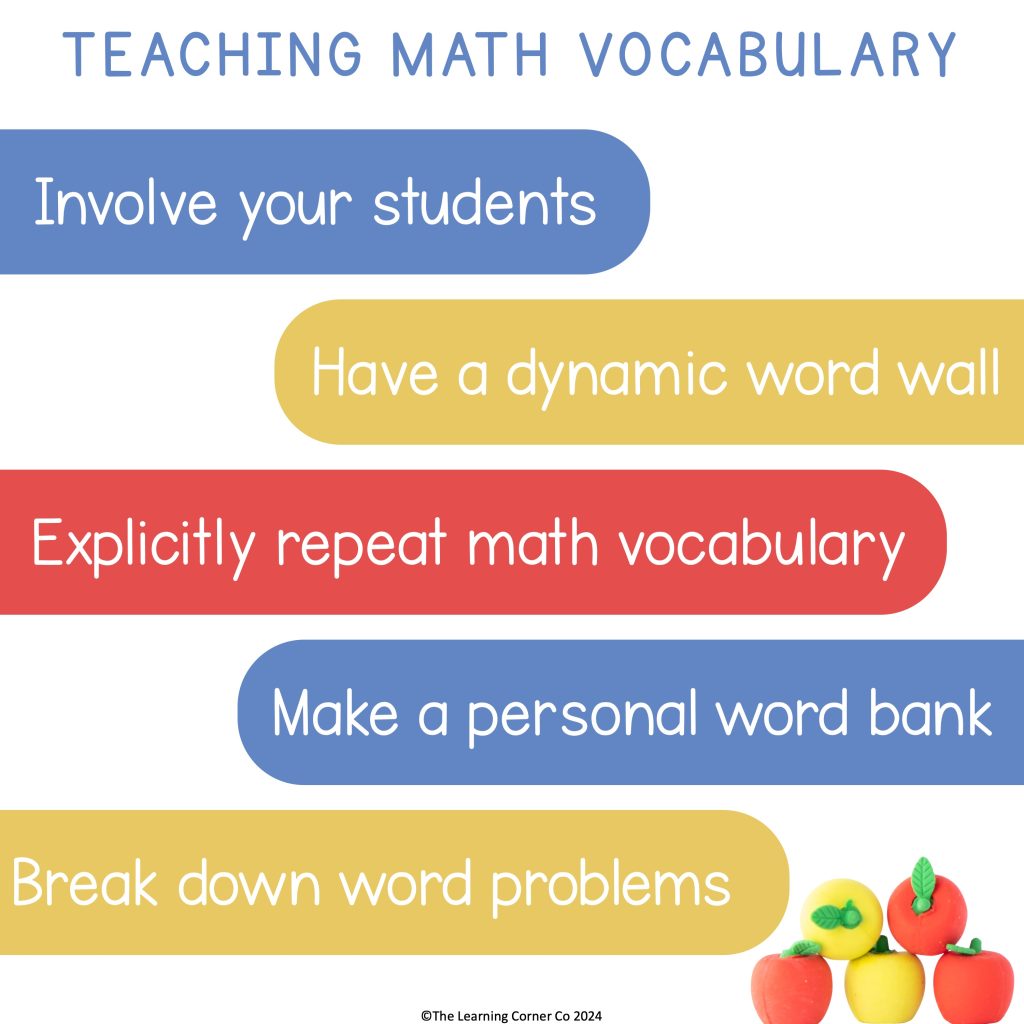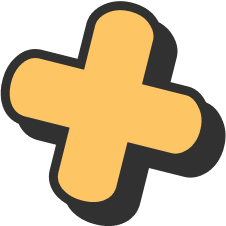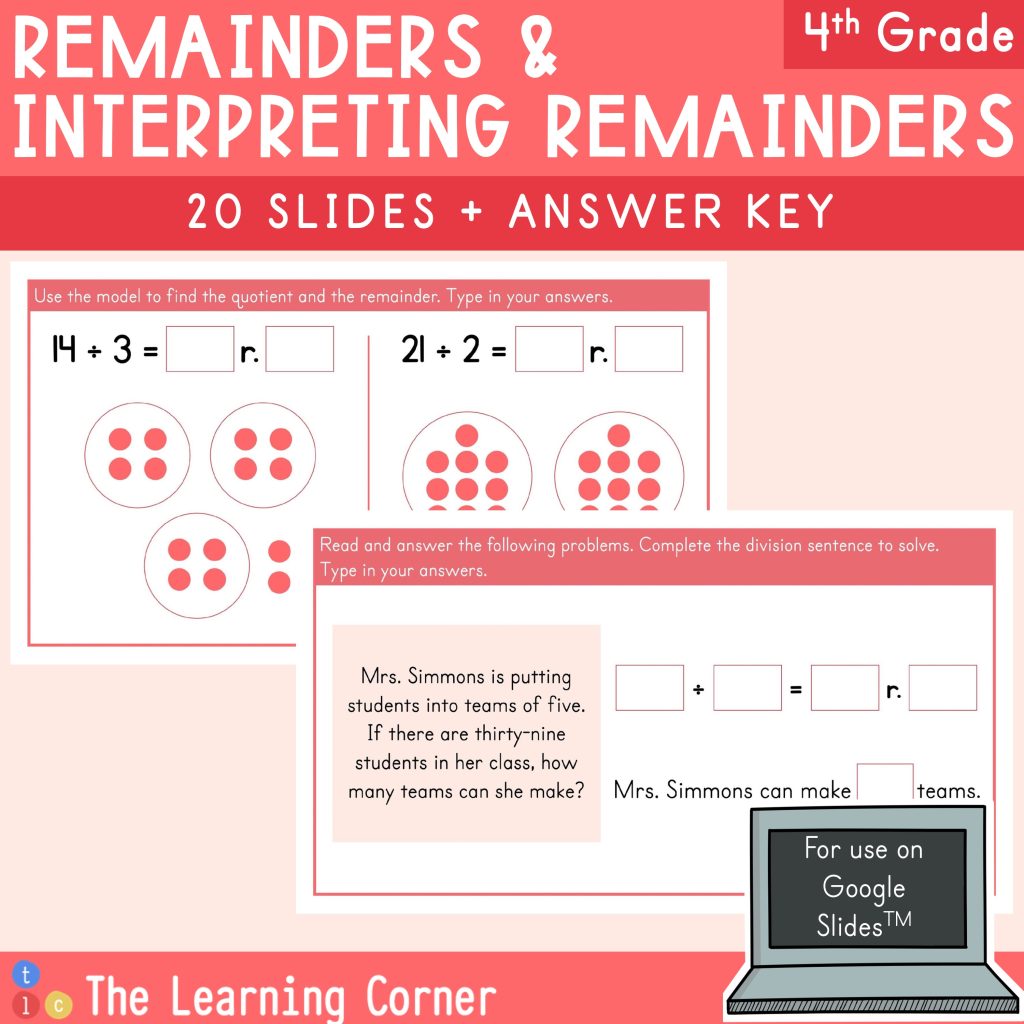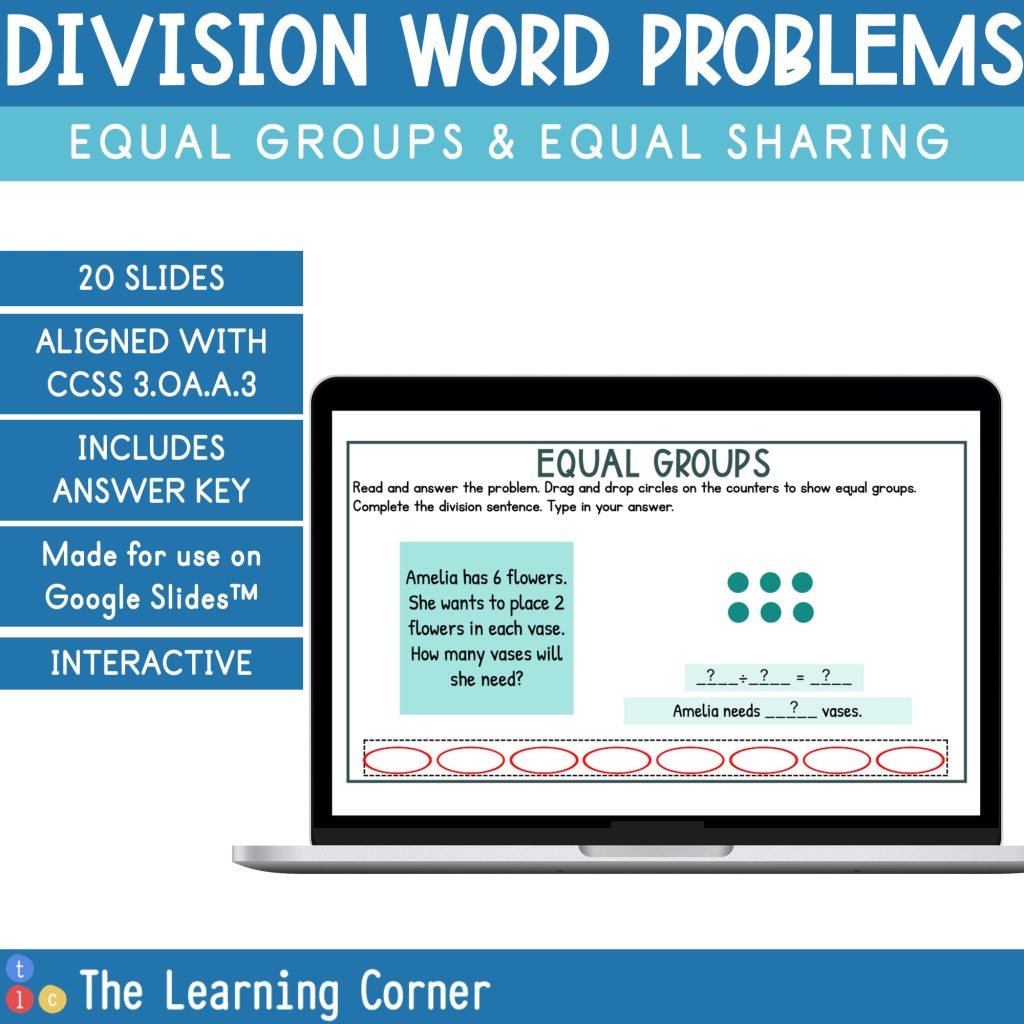Is teaching math vocabulary part of your class? You might think that vocabulary is only learned during English Language Arts (ELA), but math has a ton of vocabulary that it is almost a different language.
Just imagine an English language learner or a learner who has reading disabilities learning math vocabulary. A little bit tricky, right?
Think of the word ‘point’ for example. Students in ELA say that this can be an action to direct someone towards something, or it can even mean a sharp end of a tool. Now, in math, they learn that it separates a whole number from the decimals. Add to that the fact that you don’t really say ‘point’ when reading a decimal! You say “and”.
Oh, my! Imagine your students learning this and it makes math even more confusing.
Why is it important to teach vocabulary in math?
When students learn their math vocabulary, not only can they eliminate the confusion but they would also be able to explain their math thinking in words.
Have you ever heard of the words ‘plused’, ‘minused’ or the phrases ‘this one’ and ‘that thing’ when your students are explaining their thinking? They are not exactly wrong and you may have understood them, but it would be much clearer if your students say the words ‘add’, ‘subtract’, or even the phrase ‘bring down the remainder’.
Using the proper math vocabulary will help your students communicate better and be confident that they understand each concept. Plus, it will help with clarity when communicating as a class.
So, how do we teach math vocabulary to our students?
Strategies to Teach Math Vocabulary

Of course, teaching math vocabulary is not just giving your students a list of vocabulary words that they need to memorize. Just like learning any language, your students should know the definition from context.
Here are some ways you can teach math vocabulary.
- Involve your students in making a definition for each word
You don’t want your students just staring at a vocabulary word and memorizing the definition. Let them be part of the process. Students learn math vocabulary better when they know it from context.
Let your students use their own vocabulary to give meaning to each word. Start by letting your students explore the words when introducing a unit. Let them look for important math words in a unit and list down what they think may be important for the lesson. Emphasize that there are no right or wrong answers. If they think that a word is important, encourage them to list it down.
Once you have the list of vocabulary from your students, let them make up the definition as you go along. It is best that the students know that the definitions should be constantly updated while they are learning.
- Have a dynamic word wall
This goes hand-in-hand with getting your students involved with the definition. Sure, a static word wall is a great reference when students have understood the concept. But by using a dynamic word wall, you are inviting the students to change, edit, or update the word wall based on their understanding.
With your help, students can also connect previous vocabulary words from the present ones making a deeper understanding of each concept.
- Explicitly repeat to reinforce the vocabulary
Studies show that repetition helps with recognition and understanding of a vocabulary. At the beginning of the day or the week, list three important words that students should learn (or use the list that students have made). Emphasize them in your class discussion, small groups, or even in word problems. Have students listen to and count how many times they encounter each word.
Make it a big deal when your students use the vocabulary. This way, others would be in on the fun too.
- Make a personal word bank
Let your students make their own personal word banks. You can use rings and index cards to help them make their own dictionary for math vocabulary. Have them write the vocabulary on one side and a picture or a definition on the other side.
What’s best about this is that it is personalized. No two students have the same word banks!
- Break down word problems
Word problems can be really tricky. You can opt to start your students with numberless word problems to help them understand the context before focusing on the numbers. Your students read the word problems aloud once. Then, they read it again with the problems and highlight key terms. Lastly, read the word problem as a class.
Reading this way will help clarify the word problems and would help with your student’s fluency.
Are you looking for an activity to help your students with word problems? Head over my TPT store or you can check out these resources!






